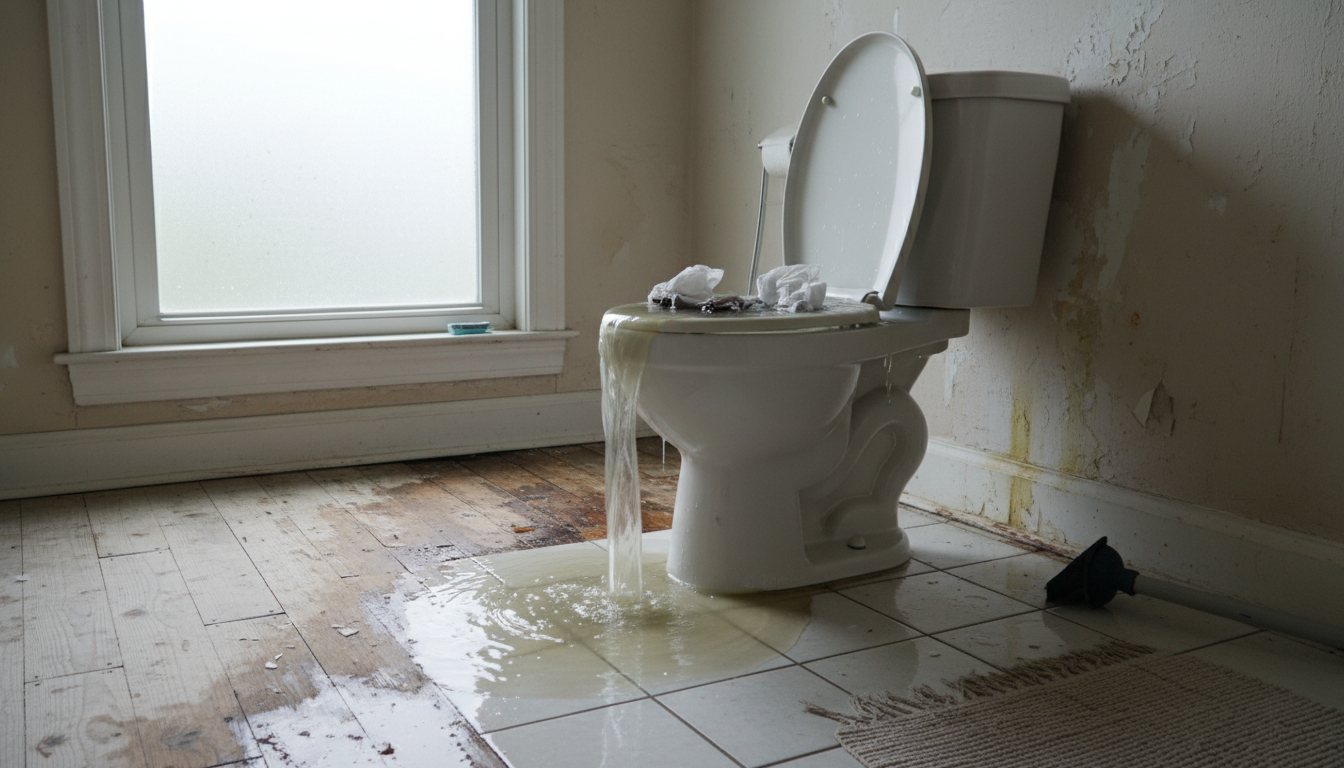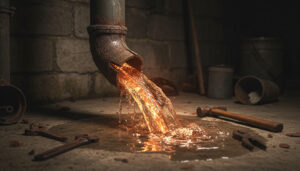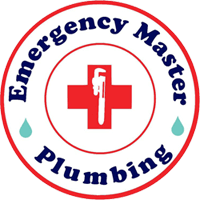

In the world of home maintenance, plumbing issues can strike at the most inconvenient times. Whether you’re dealing with a slow drip or a sudden flood, understanding the difference between emergency plumbing and routine repairs is crucial for protecting your property and budget. Homeowners often confuse the two, leading to delayed responses or unnecessary expenses. This guide breaks down the key distinctions, helps you identify when to call for urgent help, and offers practical tips to prevent problems before they escalate.
As a homeowner in Arizona’s harsh climate—where extreme heat and hard water can accelerate pipe wear—knowing these differences isn’t just helpful; it’s essential. We’ll explore common scenarios, warning signs, and cost-saving strategies to keep your plumbing system running smoothly. By the end, you’ll know exactly when to schedule a routine check-up versus dialing for immediate assistance.
What Constitutes Emergency Plumbing?
Emergency plumbing refers to urgent situations that demand immediate professional intervention to prevent severe damage, health hazards, or costly repairs. These aren’t minor annoyances; they’re crises that can compromise your home’s safety and habitability.

Key Signs of a Plumbing Emergency
Recognizing a plumbing emergency early can save thousands in water damage. Here are the most common indicators:
- Burst Pipes or Major Leaks: If water is gushing from a pipe, shut off your main water supply immediately. In Arizona, high temperatures can cause pipes to expand and burst, leading to flooding within minutes.
- Overflowing Toilets or Backed-Up Sewers: Sewage backups pose serious health risks, including exposure to bacteria. Don’t plunge repeatedly—instead, call a pro to avoid worsening the clog.
- No Hot Water or Complete Water Shutdown: A sudden loss of water pressure or heat could signal a break in your main line, especially during peak summer usage.
- Gas Line Issues: Though less common, any suspected natural gas leak (often tied to water heaters) requires evacuating the home and calling emergency services first.
These situations typically require 24/7 response because delays can lead to structural damage, mold growth, or even foundation issues in desert soils.
Why Emergency Plumbing Can’t Wait
Ignoring an emergency can escalate minor leaks into major floods. For instance, a small pipe crack left unchecked for 24 hours could waste up to 5,000 gallons of water—enough to cause slip hazards, electrical shorts, and skyrocketing utility bills. In Arizona, where water conservation is vital due to drought conditions, this also impacts local resources.
Professionals equipped with advanced tools like sewer cameras and hydro-jetting arrive prepared to isolate the problem quickly. Expect costs to range from $300 to $1,500, depending on severity, but acting fast often reduces the total expense.
Understanding Routine Plumbing Repairs
In contrast, routine repairs involve scheduled or proactive fixes for wear-and-tear issues that don’t pose immediate threats. These are preventive measures to maintain efficiency and extend the lifespan of your plumbing system.
Common Examples of Routine Repairs
Routine work focuses on gradual deterioration rather than crises. Typical tasks include:
- Fixing Dripping Faucets: A leaky faucet wastes about 3,000 gallons of water yearly. Tightening connections or replacing washers is a simple, low-cost fix.
- Clogged Drains: Minor blockages from hair, soap, or grease respond well to plungers or natural cleaners like baking soda and vinegar.
- Water Heater Maintenance: Annual flushing removes sediment buildup, common in areas with hard water like Phoenix, improving energy efficiency.
- Pipe Inspections and Minor Replacements: Checking for corrosion or low-flow issues during seasonal tune-ups prevents future emergencies.
These repairs are often planned during off-peak times, costing $100 to $500, and can be bundled into maintenance contracts for savings.
The Role of Seasonal Factors in Routine Care
Arizona’s climate plays a big role here. Summer heat stresses AC-linked plumbing, while winter chills (though mild) can cause pipe freezes in uninsulated homes. Routine checks before monsoon season ensure gutters and downspouts direct water away from foundations, avoiding erosion-related cracks.
Emergency Plumbing vs. Routine Repairs: A Side-by-Side Comparison
To clarify the differences, let’s compare these services head-to-head. This breakdown helps homeowners decide when to act without overreacting.
| Aspect | Emergency Plumbing | Routine Repairs |
| Urgency | Immediate (within hours) – risks health/safety | Scheduled (days/weeks) – no imminent danger |
| Common Causes | Sudden bursts, clogs, or system failures | Gradual wear, minor leaks, maintenance needs |
| Typical Cost | $300–$1,500+ (includes after-hours fees) | $100–$500 (often preventive) |
| Tools Needed | Hydro-jets, cameras, full shut-off | Basic wrenches, drain snakes, inspections |
| Time to Fix | 1–4 hours, potentially overnight | 30 minutes to a few hours |
| Prevention Tip | Install leak detectors and pressure valves | Annual inspections and water softeners |
This table highlights how emergencies demand rapid, specialized action, while routine tasks build long-term resilience. For example, addressing a slow drain routinely prevents it from becoming a full sewer backup.
How to Identify and Prevent Plumbing Issues Before They Escalate
Prevention is the best strategy for minimizing both emergencies and routine calls. By spotting early warning signs, you can shift from reactive fixes to proactive care.
Early Warning Signs to Watch For
Stay vigilant with these subtle cues:
- Gurgling sounds from drains indicate air trapped by partial blockages.
- Discolored water suggests rust or mineral buildup, prevalent in Arizona’s groundwater.
- Fluctuating water pressure might signal mineral deposits or small leaks.
- Foul odors from sinks or toilets point to dry P-traps or sewer gas.
Addressing these promptly through DIY checks or professional visits keeps issues routine rather than urgent.
Practical Prevention Strategies
Incorporate these habits into your home maintenance routine:
- Regular Inspections: Schedule bi-annual checks for pipes, fixtures, and appliances. In Arizona, focus on heat-resistant materials to combat expansion.
- Water Quality Management: Use softeners to combat hard water, which causes scaling in pipes and reduces efficiency by up to 20%.
- Eco-Friendly Habits: Avoid flushing non-biodegradable items and run garbage disposals with cold water to prevent grease solidification.
- Smart Tech Integration: Leak sensors and smart water monitors alert you to issues via apps, potentially cutting emergency risks by 50%.
For Arizona residents, preparing for seasonal extremes—like insulating exposed pipes before rare freezes—can prevent many cold-weather emergencies.
Cost-Benefit Analysis: Investing in Prevention
Routine maintenance might seem like an extra expense, but it pays off. Studies show that preventive plumbing care reduces emergency calls by 70%, saving homeowners an average of $1,200 annually in damages. In drought-prone areas, it also conserves water, aligning with local regulations.
When to Call a Professional: Making the Right Decision
Deciding between DIY, routine service, or emergency help depends on your comfort level and the issue’s scope. If you’re unsure, err on the side of caution—plumbing systems are interconnected, and mishandling one part can cascade problems.
For routine repairs, licensed plumbers ensure compliance with codes, especially in Arizona where seismic activity and soil shifts require sturdy installations. Emergencies, however, need certified experts with rapid response capabilities.
Choosing the Right Plumbing Service Provider
Look for companies with:
- 24/7 availability for true emergencies.
- Transparent pricing and warranties.
- Expertise in local conditions, like handling calcified pipes from desert water.
Always verify licenses through the Arizona Registrar of Contractors to ensure trustworthiness.
Real-Life Scenarios: Emergency vs. Routine in Action
Consider these hypothetical cases based on common Arizona homeowner experiences:
- Scenario 1: The Dripping Shower Head – You notice a slow leak during your morning routine. This is a classic routine repair: replace the washer for under $50. Delaying it wastes water but won’t flood your home.
- Scenario 2: Midnight Kitchen Flood – Grease clogs the drain, causing water to back up and overflow. This emergency requires immediate hydro-jetting to stop contamination and damage.
- Scenario 3: Summer Water Heater Failure – During a heatwave, your heater stops working, leaving no hot water. If it’s a simple thermostat issue, it’s routine; if the tank ruptured, it’s an emergency with flood risks.
These examples illustrate how context determines the response, emphasizing the value of professional assessment.
Long-Term Plumbing Health: Building a Resilient System
Beyond immediate fixes, focus on holistic care. Upgrade to low-flow fixtures for efficiency, and consider tankless water heaters for Arizona’s variable demands—they last 20+ years with proper maintenance.
Regularly review your home’s plumbing age; systems over 50 years old in older Phoenix neighborhoods often need upgrades to meet modern standards.
By distinguishing emergency plumbing from routine repairs, you empower yourself to act wisely, safeguarding your home and wallet. Don’t let confusion lead to costly mistakes—knowledge is your first line of defense.
If you’re facing plumbing concerns in Arizona, trust the experts at Emergency Master Plumbing & Air. With years of experience handling both urgent crises and everyday maintenance, our team is ready to serve you 24/7. Call us today at 623-584-4706 for reliable, efficient solutions tailored to your needs.
